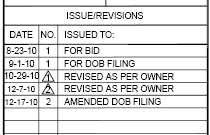Part of routine maintenance is to replace the belts of your rooftop fans regularly. A basic routine might be simply walking past the equipment on a monthly basis during good weather for a visual and audible inspection that may identify developing problems such as chipped belts or bad bearings. Taking the cover off once a year to inspect the bearings, motor and mounts will provide long life and assure the cover removal will not be a 4 hour job if you need to. Also, removal of the cover properly will help correct it. Don’t forget to re-install it so winds do not blow it off the roof.
There are many factors affecting the belts’ lifetime and a number of factors should be taken into account:
• Climate – hot, cold, humid, damp etc.
• Running time
• What the equipment feeds
• Condition of the pulleys
• Pulley ratio
• Motor and drive type
• Quality and type of belt, pulley, motor
• Cracks in belt
Many times it is better to undertake condition based or business critical maintenance in order to identify the best type of maintenance required. Inspections might be performed at best quarterly and minimally, semi annually. Cracking and glazing would warrant change out, although you should be looking at any causes for failure such as pulley misalignment, bearing problems or over and under tensioning.
The first time you replace the belt, measure the diameter of the adjustable sheave and replace it with a proper sized fixed sheave. Adjustable sheaves are “belt eaters”. You should be able to skip a winter visit when the roofs are dangerous if you check the rest of the year.
If you are breaking belts on a regular basis, when the fan is on a time clock start/stop, then try to step up your belt profile. If you are changing belts twice a year for the sake of it, on a 24/7 fan, its time to get yourself a decent Fitter who can adjust your belt tension, and not give it a walk by test. Stock levels of belts should be inline with the amount you use and if you have a few different types of belts on site, try to standardize your belt sizes so that you don’t need to stock many.
A laser tool can be used to ensure alignment on the semi-annual preventative maintenance and when new belts are installed.
Most drive belts only last about one year. It is, therefore, a good practice to change them annually. If you do not do this, they often end up breaking and creating downtime and a service call. Some exhaust fan belts can break without anyone initially noticing until odor control becomes a problem.
If the belt supports a very critical safety function like a hazardous materials fume hood, you should check it more often to make sure it’s not out of adjustment or any other part of the ventilation system is having problems. And replace the belt at the first sign of wear, or perhaps even yearly even if it looks good just to be safe.
Discover more from Helping NYC & Long Island Commercial Tenants, Owners, and Developers
Subscribe to get the latest posts sent to your email.





